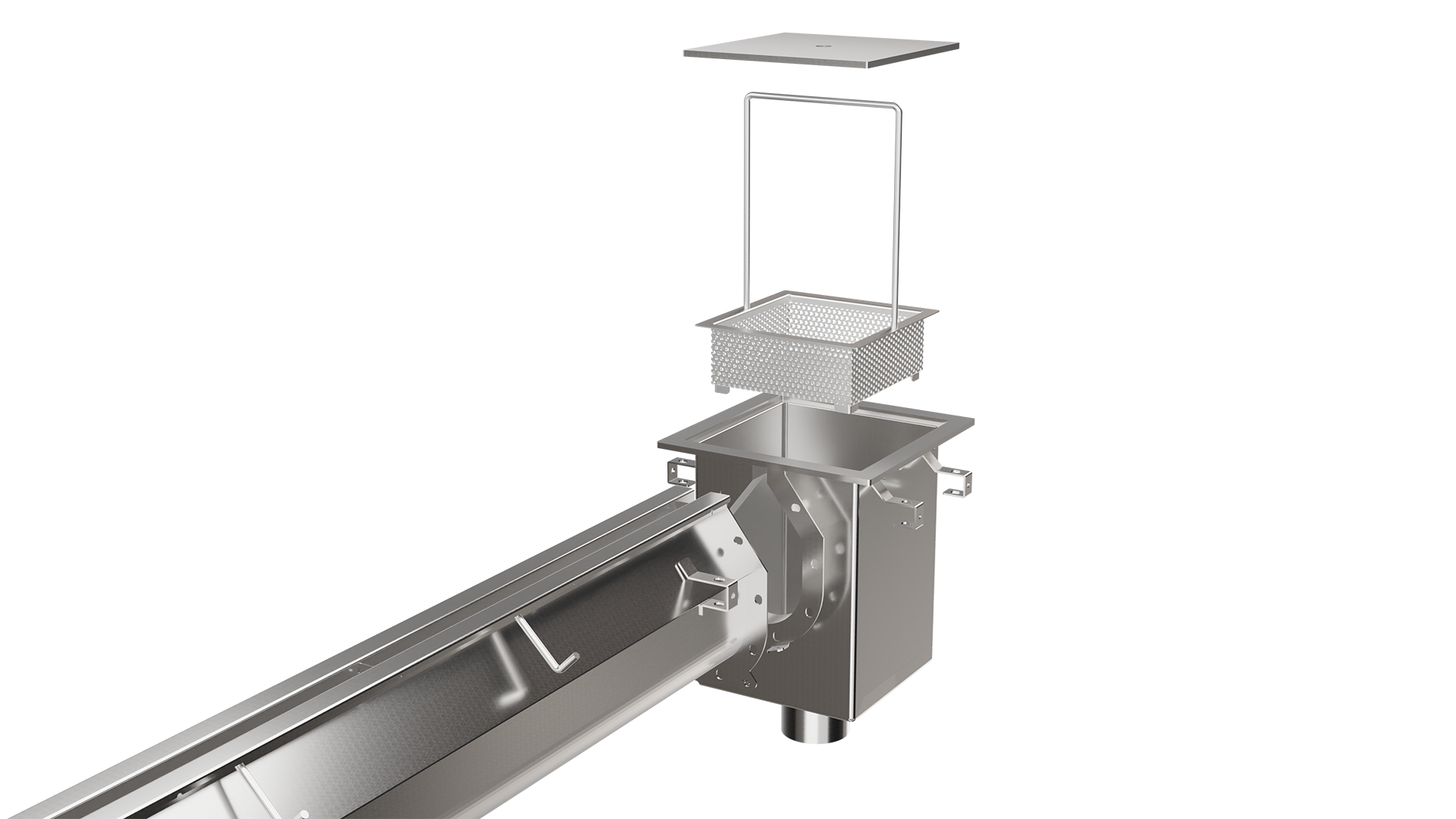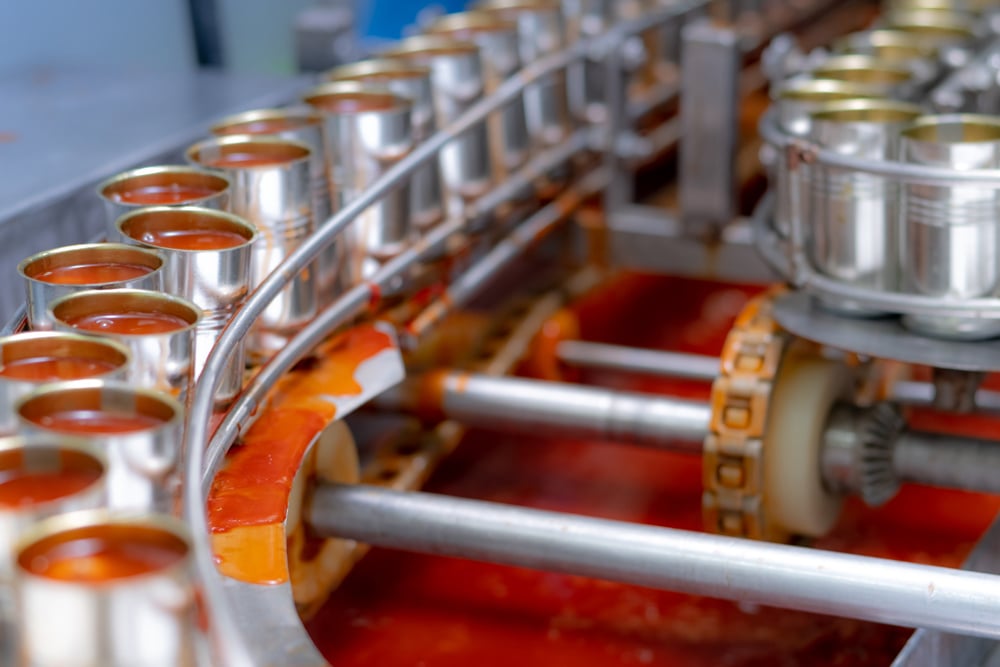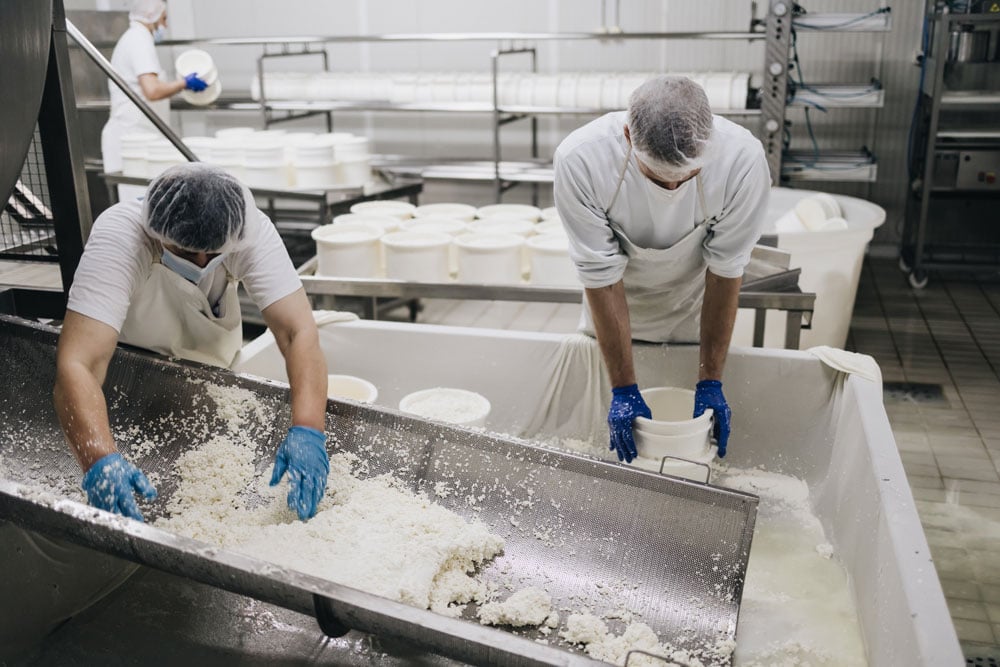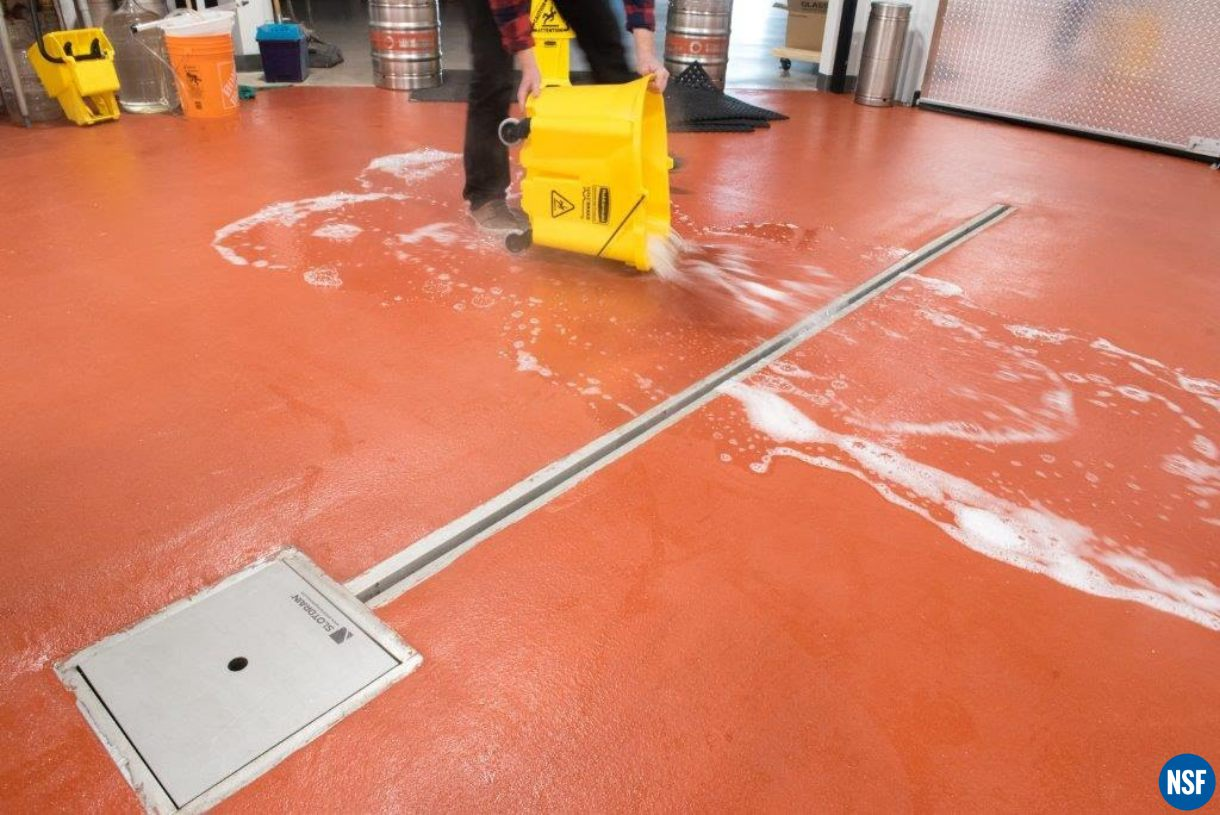The food industry has many things to watch out for, one of the most significant being cross-contamination. When it occurs, cross-contamination can cause many issues that could, many times, have otherwise been avoided with proper precautions.
Here is what you should know about cross-contamination and how can food handlers control the potential for cross-contamination.
What is Cross-Contamination?
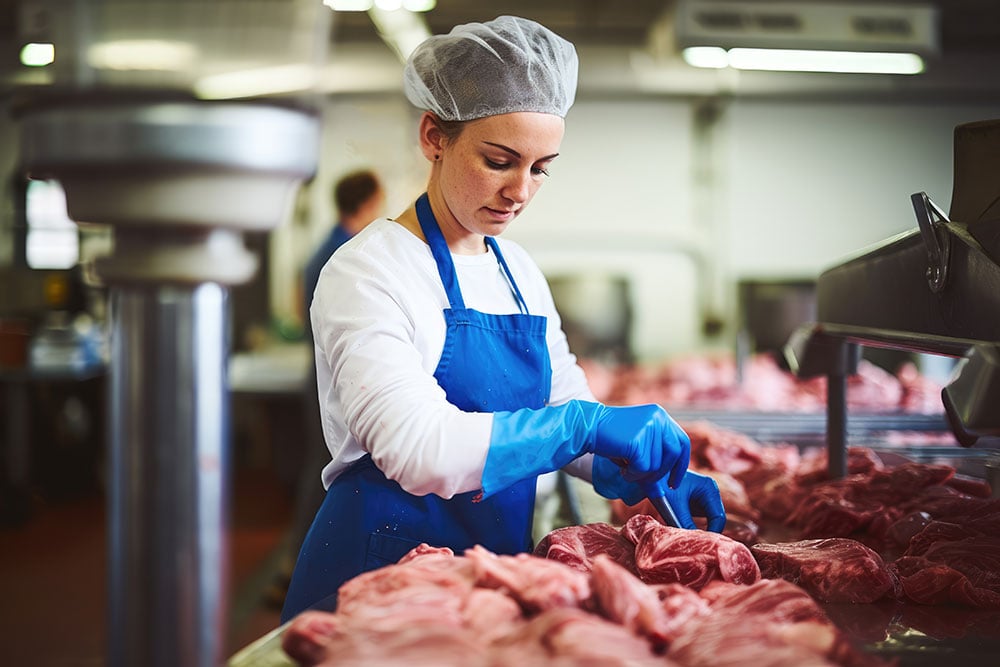
Cross-contamination is the transfer of bacteria or other contaminants during food handling. It can occur at any point along the production chain, including:
- Before or during harvest or slaughter
- During processing or manufacturing
- During transportation or storage
- At market
- During preparation or serving
Different types of cross-contamination can be broken down by type of contaminant and transfer methods. The types are as follows:
Cross-Contamination by Contaminant
This is the most common form of cross-contamination related to food service. It refers to the transfer of harmful microorganisms. More specifically, it includes:
Bacterial and Viral
This cross-contamination includes the disease-causing bacteria, particularly the "Big 6" for causing foodborne illnesses: Shigella, E. Coli, typhoidal and non-typhoidal Salmonella, Hepatitis A, and Norovirus.
It is one of the biggest concerns for cross-contamination because the bacteria can multiply in food at certain temperatures and transfer between different items easily.
While less likely to transfer during preparation or handling, parasites and fungi can also cause foodborne illness.
Allergen Cross-Contamination
Allergens are proteins that cause allergic reactions in susceptible individuals. Some of the most common allergens include:
- Eggs
- Milk
- Soy
- Peanuts
- Tree nuts-almonds, walnuts, pecans
- Wheat
- Fish
- Shellfish
These proteins are easily transferred during handling and can lead to severe reactions. Gluten, while not a true allergy, can have similar transference issues.
Chemical Cross-Contamination
Restaurants use many different cleaning products to help reduce the risk of biological contamination. These chemicals require careful handling and storage; otherwise, there is a risk of them contaminating food products.
Cross-Contamination By Transfer
Food-to-Food
Food-to-food contamination occurs when mixing high-contamination risk foods with other food products. The higher-risk foods that carry and support pathogen growth more easily than other foods are called Potentially Hazardous Foods (PHFs). They include leafy greens, raw eggs and meat, deli meats, unpasteurized milk, soft cheeses, and even bean sprouts.
Equipment-to-Food
Using the same equipment, surfaces, or utensils for different foods, especially contaminated and uncontaminated foods, without proper sanitation between uses can lead to cross-contamination. This is because some microorganisms can survive on surfaces longer, which can make transference more likely.
Transfer via equipment doesn't just apply to bacteria contamination; allergens and chemicals can also stay on surfaces and equipment for extended periods. These surfaces include counters and cookware, commonly called food-contact surfaces.
Person-to-Food
People can also introduce and contribute to the transfer of pathogens and contaminants. Poor hand-washing habits and techniques and employees coming in sick and handling food are just two examples of people transferring contaminants.
Why You Need to Avoid Cross-Contamination
Cross-contamination ruins food products and can cause severe illness and, potentially, even death. You also want to avoid cross-contamination because it can bring severe and costly health code violations–you will have to pay fines for violating food safety and shut down until the problem is resolved.
Foodborne illness outbreaks can also lead to lawsuits with angry consumers, which can cause a financial burden and further legal issues. Finally, having cross-contamination issues can make you lose consumer trust and damage your reputation.
Best Way to Avoid Cross Contamination
With the various types of cross-contamination, there is no one best way to avoid cross-contamination. To prevent cross-contamination, you should look at the various aspects of food production.
Purchasing and Receiving
This is the hardest step when it comes to how can food handlers control the potential for cross-contamination. The best thing you can do is handle purchasing and delivery with care and pay careful attention. Some tips for handling this step are:
- Purchase products from reputable suppliers.
- Inspect each delivery for signs of spoilage or pests before accepting a delivery.
- Before accepting deliveries, check the expiration dates.
- Reject products that are dirty or damaged, including cans that are misshapen or dented.
- Be alert regarding food recalls and reject shipments with recalled items.
Storing Food
Proper food storage is vital. To prevent cross-contamination you should take the following steps:
- Do not let deliveries sit out; immediately move them to the appropriate storage areas after accepting them.
- Never store foods outside of their designated areas.
- Never store food or food contact items near cleaning supplies.
- Cover all food items securely with airtight lids to prevent contaminants from falling inside.
- Utensils and equipment should be stored to prevent contamination of food contact surfaces (keep glasses upside down, utensils handle up, keep cutting boards and napkins on covered containers, etc.)
- Store anything used for gluten and allergy-free products above regular equipment.
- Store all food contact items a minimum of six inches off the ground.
- Keep ready-to-eat and raw foods separated.
- Ensure that all food storage areas maintain the appropriate temperature.
- Discard any recalled items immediately.
- Discard food containers that have lost their structural integrity.
- Never reuse chemical containers for food storage.
Food Preparation
What should a food handler do to avoid cross-contact when preparing food? There are many precautions handlers should be taking to avoid cross-contamination. They are what many consider to be the best way to avoid cross-contamination. Food handlers should:
- Practice proper hand washing by using soap and water for 20 seconds. Hand washing should happen after using the restroom, coughing or sneezing, using non-sanitized items, including cell phones, touching PHFs, and before dealing with allergy-free items and orders.
- Clean surfaces and utensils after use.
- Use separate cutting boards for PHFs and other food items.
- Wash and sanitize food contact surfaces after each use, especially after working with PHFs.
Serving
When it comes to serving, to prevent cross-contamination, employees should:
- Never touch food contact surfaces of utensils, dishes, or glassware.
- Never stack glasses or dishes.
- Never touch ready-to-eat food with bare hands.
- Clearly communicate allergen-free orders to kitchen staff.
- Deliver allergen-free food directly to guests and separate it from the rest of the food.
Cleaning
For what is the best way to avoid cross-contamination with cleaning, there are a few things you can do:
- Store cleaning products and tools away from food in their own designated area.
- Store chemicals in their original container or one that is clearly labeled.
- Dispose of mop water and other cleaning fluids in a designated service sink.
- When working with chemicals, use the proper concentration.
- You should also ensure there is no exposed food when working with chemicals.
- To prevent cross-contamination, you should also install proper floor drainage from a company like FoodSafe Drains.
Drainage from FoodSafe Drains
Drainage often gets overlooked everywhere, but it is essential to any location, especially in the food industry. It is one of the keys to the question of "how do you avoid cross-contamination."
FoodSafe Drains creates food-safe drainage options that help maintain safe, sanitary facilities. They offer many systems with an NSF certification design and T304 and T316 stainless steel construction. The stainless steel creates a strong, durable system resistant to extreme temperatures and corrosive substances like cleaning products. The systems they offer include:
The FoodSafe Slot Drain
The FoodSafe Slot Drain is a linear system that is pre-sloped and pre-assembled and features a slim, grate-free channel that can handle flow rates up to 27 GPM. The sleek design allows it to blend seamlessly with its environment, and the open design helps make maintenance easy. It is compatible with clean-in-place (CIP) for automated cleaning.
FoodSafe Trench Drain
A more heavy-duty version of the traditional trench drain, the FoodSafe Trench Drain can handle larger flow rates than the Slot Drain and is protected by a thick, stainless steel grate cover. It is compatible with CIP, and the wide channel helps make cleaning a breeze.
FoodSafe Hub and Area Drains
The hub and area drains are great additions to the FoodSafe Slot Drain and Trench Drain and work well in smaller areas for wastewater management. This includes cold storage areas and the cleaning supply storage. The drains have a Tamper-Proof Magnetic Strainer to catch debris, which is only accessible by authorized individuals and protected by a thick grate.
The FoodSafe Floor Sink
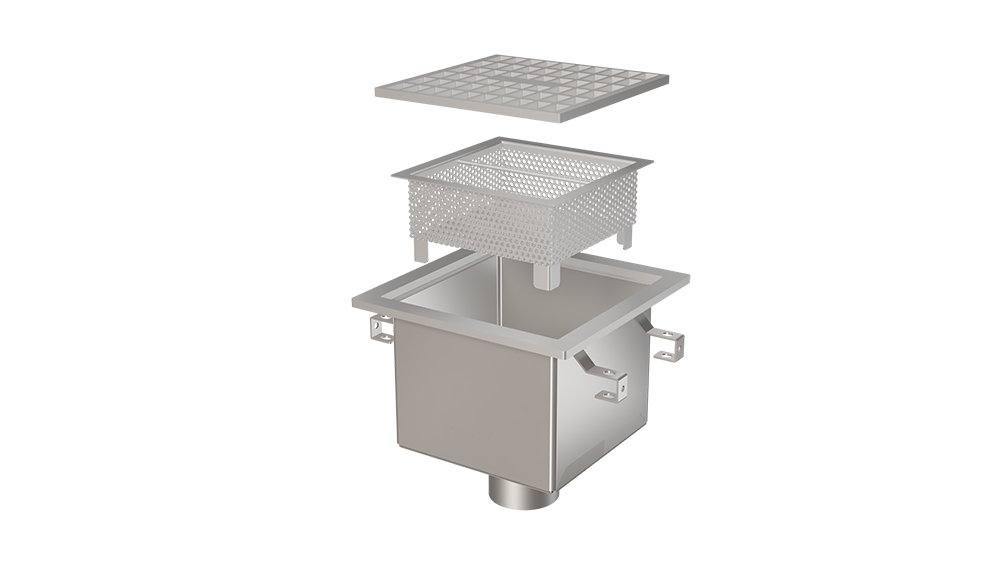 As mentioned earlier, workers must use care when working with chemicals, disposing of them, and cleaning fluids. The FoodSafe Floor Sink is an excellent option that provides for quick disposal. Its design resembles the hub and area drains, with a Tamper-Proof Magnetic Strainer and durable grate cover.
As mentioned earlier, workers must use care when working with chemicals, disposing of them, and cleaning fluids. The FoodSafe Floor Sink is an excellent option that provides for quick disposal. Its design resembles the hub and area drains, with a Tamper-Proof Magnetic Strainer and durable grate cover.
The FoodSafe Catch Basin
The FoodSafe Catch Basin is compatible with the Slot and Trench Drain systems. It catches objects and debris that may fall into the system, and holds them in a Tamper-Proof Magnetic Strainer Basket until retrieval.
Preventing Cross-Contamination with FoodSafe Drains
Cross-contamination is something nobody wants to deal with. If you take the right precautions and practice proper food safety, you will significantly minimize the risk of cross-contamination in your business. There is no simple answer to "Which practice can help prevent cross-contamination?" It is the culmination of everything together that helps prevent it from occurring. One easy step is installing a proper drainage system, like one from FoodSafe Drains.
Contact FoodSafe Drains today to learn more about everything they offer and how they can help you avoid cross-contamination.


